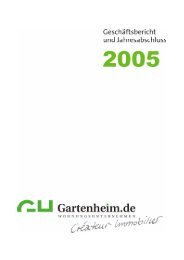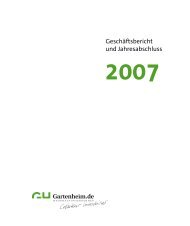analysis of the influences of solar radiation and façade glazing ...
analysis of the influences of solar radiation and façade glazing ...
analysis of the influences of solar radiation and façade glazing ...
You also want an ePaper? Increase the reach of your titles
YUMPU automatically turns print PDFs into web optimized ePapers that Google loves.
than <strong>the</strong> inner air temperature. It was found that <strong>the</strong> amplitude between day <strong>and</strong> night<br />
internal air temperatures is significantly higher for apartments with variable air volume<br />
systems in comparison to constant air volume systems. The difference between <strong>the</strong> mean<br />
operative temperature reaches up to 4.4°C. Window shades with <strong>the</strong> highest reflective<br />
surface mounted outside <strong>and</strong> near <strong>the</strong> fenestration guarantee <strong>the</strong> best protection <strong>of</strong> gains<br />
from <strong>solar</strong> <strong>radiation</strong>. In order to compile <strong>the</strong> energy balance <strong>of</strong> <strong>the</strong> analyzed building, <strong>the</strong><br />
operation <strong>of</strong> a <strong>solar</strong> domestic hot water system (SDHW) was investigated. Several tilt<br />
angles were tested for <strong>the</strong> <strong>solar</strong> collectors, whereas <strong>the</strong> simulation showed that an angle <strong>of</strong><br />
35° is optimal in summer time <strong>and</strong> an angle <strong>of</strong> 70°C is optimal for <strong>the</strong> cold period. If a<br />
fixed tilt angle <strong>of</strong> 45° is used throughout <strong>the</strong> year <strong>the</strong> absorbed <strong>solar</strong> energy varies only<br />
about 10 % maximum. It turned out that <strong>the</strong> <strong>solar</strong> conversion process is about ten times<br />
lower in winter than those during <strong>the</strong> summer time. Ano<strong>the</strong>r important question in <strong>the</strong><br />
design <strong>of</strong> a SDHW system is <strong>the</strong> optimal value <strong>of</strong> a stratified storage tank. Based on <strong>the</strong><br />
<strong>analysis</strong> <strong>of</strong> <strong>the</strong> influence <strong>of</strong> <strong>the</strong> volume <strong>of</strong> accumulated water on <strong>the</strong> <strong>the</strong>rmal performance<br />
<strong>of</strong> <strong>the</strong> SDHW system, it can be concluded that <strong>the</strong> recommended volume <strong>of</strong> <strong>the</strong> storage<br />
tank for <strong>the</strong> developed case is 4 m 3 . Results <strong>of</strong> <strong>the</strong> calculations showed that <strong>the</strong> temperature<br />
<strong>of</strong> storage water increased by over 50°C between April <strong>and</strong> September. Hereby it could be<br />
shown that <strong>the</strong> total designed area <strong>of</strong> <strong>solar</strong> collectors is too small to be an effective support<br />
<strong>of</strong> <strong>the</strong> heating system during <strong>the</strong> whole year.





